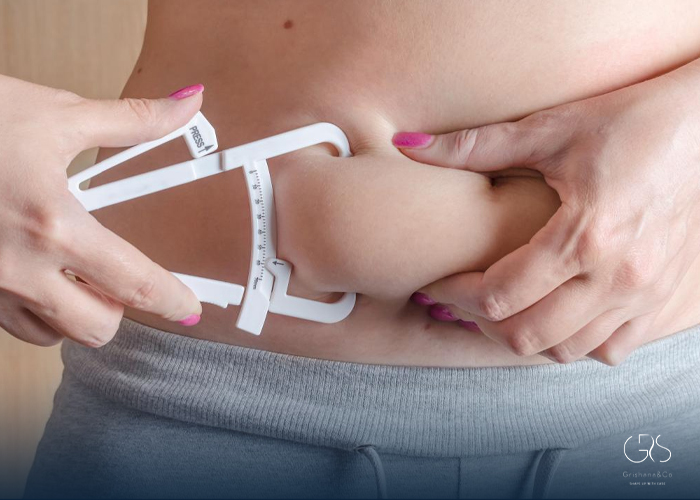Body fat percentage is a significant aspect of our overall health and fitness. Understanding how to calculate body fat percentage, what it means, and how to manage it are crucial for maintaining a healthy lifestyle. In this article, we will explore the concept of body fat percentage, ways to calculate it, what constitutes a “good” body fat percentage, the importance of maintaining a healthy body fat percentage, and strategies for lowering body fat.
What Is Body Fat Percentage?
Body fat percentage refers to the proportion of fat in the body in comparison to the total body weight. It is different from body mass index (BMI), which only takes into account a person’s weight and height. Body fat percentage offers a more accurate assessment of overall health and fitness. According to the American Council on Exercise (ACE), the recommended body fat percentage ranges are 25-31% for women and 18-24% for men.

Ways to Calculate Body Fat Percentage
There are several methods to calculate body fat percentage, each with its advantages and limitations.
Skinfold Caliper:
This method involves using a skinfold caliper to measure the thickness of skinfold at different points on the body. These measurements are then used in formulas to estimate body fat percentage. While this method is widely used and cost-effective, it requires trained professionals to ensure accurate measurements.

Hydrostatic Weighing:
Hydrostatic weighing, also known as underwater weighing, determines body density by weighing a person underwater. It is considered one of the most accurate methods for measuring body fat percentage, but it is not easily accessible and may be impractical for some individuals.
Air Displacement Plethysmography:
This method, commonly known as the Bod Pod, measures body volume and density by assessing the amount of air displaced when a person sits inside the Bod Pod. It’s a non-invasive method that provides accurate results, but availability may be limited and cost might be a barrier for some.
DEXA Scan:
A dual-energy X-ray absorptiometry (DEXA) scan uses X-rays to differentiate between bone, fat, and lean tissue. It is considered one of the most accurate methods for measuring body composition, offering detailed information about bone density and body fat distribution. However, it is expensive and not widely available.
What Is a ‘Good’ Body Fat Percentage?
A “good” body fat percentage varies based on age, gender, and individual health goals. Generally, for men, a body fat percentage of 10-20% is considered healthy, while for women, it ranges from 18-28%. Athletes may have lower body fat percentages due to their training and nutrition regimen.
Why Is Body Fat Percentage Important?
Maintaining a healthy body fat percentage is essential for overall health and well-being. Excess body fat, especially visceral fat around vital organs, is associated with an increased risk of chronic diseases such as diabetes, heart disease, and certain types of cancer. Conversely, having too low of a body fat percentage can lead to hormonal imbalances and reproductive issues.
How to Lower Body Fat
Achieving and maintaining a healthy body fat percentage requires a combination of proper nutrition and regular exercise.
Food
- Watch your carb intake: Consuming complex carbohydrates and minimizing simple sugars can help regulate blood sugar levels and prevent excessive fat storage.
- Focus on eating vegetables: High-fiber vegetables can help you feel full and satisfied while providing essential nutrients and antioxidants.
- Watch your portions: Be mindful of portion sizes to avoid overeating, which can lead to excess calorie intake.
- Focus on adding protein: Protein helps in muscle preservation and promotes a feeling of fullness, aiding in weight management.
Exercise
Regular physical activity, including both cardiovascular and strength training exercises, is crucial for managing body fat. Cardio workouts help burn calories and fat, while strength training contributes to building lean muscle mass, which boosts the metabolism and helps to burn more calories even at rest.

Lifestyle
Managing stress, getting enough sleep, and staying hydrated are often overlooked factors that can impact body fat percentage. Stress and lack of sleep can negatively affect hormonal balance and appetite regulation, leading to weight gain. Hydration is essential for maintaining body functions and supporting metabolism.
Conclusion
Understanding body fat percentage and its impact on health is an integral part of overall wellness. By utilizing accurate methods to measure body fat percentage, individuals can tailor their nutrition and exercise routines to achieve and maintain a healthy body composition. Furthermore, educating individuals about the significance of body fat percentage and the strategies to manage it can contribute to reducing the prevalence of obesity-related health issues.
Sources
- American Council on Exercise, Body Composition: Which Numbers Matter?
- Harvard Health Publishing, Taking aim at belly fat
- Mayo Clinic, Mayo Clinic BMI and waist circumference calculator











